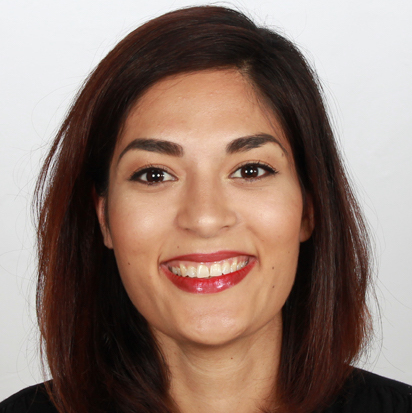
This is a summary of the article on ex-combatant silences in Sierra Leone’s truth and reconciliation commission published in Journal of Intervention and Statebuilding with extensions to South Sudan.
How do conflict-affected communities exercise agency when confronted with peacebuilding failures? How do perspectives of conflict-affected individuals enrich our understanding of continuities of injustice in contexts where peace is nascent? Drawing on complex silences in Sierra Leone and artistic practices in South Sudan, this blog unpacks unconventional sites of agency among conflict-affected individuals navigating continuities of injustice from formal transitional justice shortcomings.
Silences and transitional justice in Sierra Leone
Following 11 years of civil war, a truth and reconciliation commission (TRC) and hybrid court were established in Sierra Leone to address transitional justice needs. This article disentangles ex-combatant silences in the TRC, a mechanism celebrated for its purportedly high levels of inclusion and participation, but whose implementation failed to acknowledge the plurality of wartime experiences among low to mid-level ex-combatants, giving rise to their enforced and engaged silences. Drawing on two years of fieldwork with ex-combatants in Sierra Leone, I highlight the ways in which ex-combatants were silenced (enforced silences) and chose silence (engaged silences) within Sierra Leone’s TRC.
This research questions the agentive assumptions attached to participation in formal transitional justice mechanisms. It showcases both the marginalisation that occurs when silence is enforced (the act of being silenced) and the agency that is exercised through silence that is chosen (the act of choosing silence).
Enforced silences
In Sierra Leone, the TRC silenced ex-combatants in two significant ways: by failing to accord space to the motivations of wartime participation, and by restraining participant voices into binary collective accounts. Firstly, ex-combatants in Sierra Leone felt silenced by the limited scope of truth-seeking in the TRC, which located the focus of injustice entirely within the population of its designated victims. The TRC thus failed to engage with the motivations for violence and thereby grant ex-combatants a degree of humanity or dignity. Research respondents spoke with me about their frustration over why their own experiences of injustice and the reasons for their wartime participation did not merit inclusion within the TRC, sharing a sense of ‘unworthiness’ as a result of this invisibility. Secondly, the TRC’s either-or participation framework restricted ex-combatant engagement, by reducing individual experiences into collective binary narratives which contradicted the complexity of ex-combatant conflict experiences.
Engaged silences
Beyond being silenced, ex-combatants also agentively chose silence as both protest and loyalty in response to the TRC. Firstly, ex-combatants mobilised silence as protest to the TRC’s binary narrative condition, and as protest toward the failures of peacebuilding more broadly, which many understood as deeply flawed and unequal. Silence became a tool through which to reject the TRC and express dissatisfaction with the shortcomings of peacebuilding. Secondly, ex-combatants chose silence as an agentive act of loyalty toward their conflict-networks. Conflict networks do not evaporate when war ends; they endure. The strength of these networks fostered the sentiment that speaking to the TRC constituted a violation of these social bonds that were a primary source of safety, support and identity during war. In a fragile post-conflict environment, the salience of these networks endured and fears of betrayal and associated reprisals discouraged participation in the TRC.
Arts and transitional justice in South Sudan
My current research explores dynamics of conflict and peace in South Sudan that emerge through how conflict-affected individuals navigate lived experiences of successive civil wars and continuities of violence. Continuities of injustice, unconventional agency and complexity of conflict experiences are features shared across lived experiences of civil war in Sierra Leone and South Sudan, though vary in their expression.
Unlike Sierra Leone, transitional justice commitments in South Sudan remain unfulfilled. Coupled with continuities of violence and high levels of government censorship, people are turning to the arts to express the plurality of their wartime experiences, as well as their justice needs and peacebuilding hopes. Murals, political cartoons, paintings, music and even dance are among the artistic practices being mobilised as creative spaces for both reconciliation and resistance. South Sudanese artists emphasize the reach and agility of these practices and the space for plural truth-telling that they provide. Murals celebrating diversity co-exist alongside political cartoons calling for accountability and paintings pushing for reconciliation. In a context where contested histories and continuities of violence collide and where transitional justice is absent, artists paint the diversity of their wartime experiences and communicate their justice needs and hopes through music and movement.
Implications for continuities of injustice
The context of Sierra Leone reveals continuities of injustice when the plurality of individual wartime experiences is excluded from transitional justice structures. Transitional justice silences in this context took shape as both an embedded feature and an agentic choice among ex-combatants whose complex wartime experiences were rendered invisible. In South Sudan, artistic practices are filling the transitional justice void and remind us that in the absence of formal accountability today, demands for justice manifest in unconventional and creative ways.
Ultimately, transitional justice failures in both Sierra Leone, where formal mechanisms are present, and South Sudan, where they are not, foster continuities of injustice but also inspire unconventional sites of agency. Conflict-affected individuals turn to different forms of silence and the arts to demand recognition for the complexity of their wartime experiences and express their justice needs.